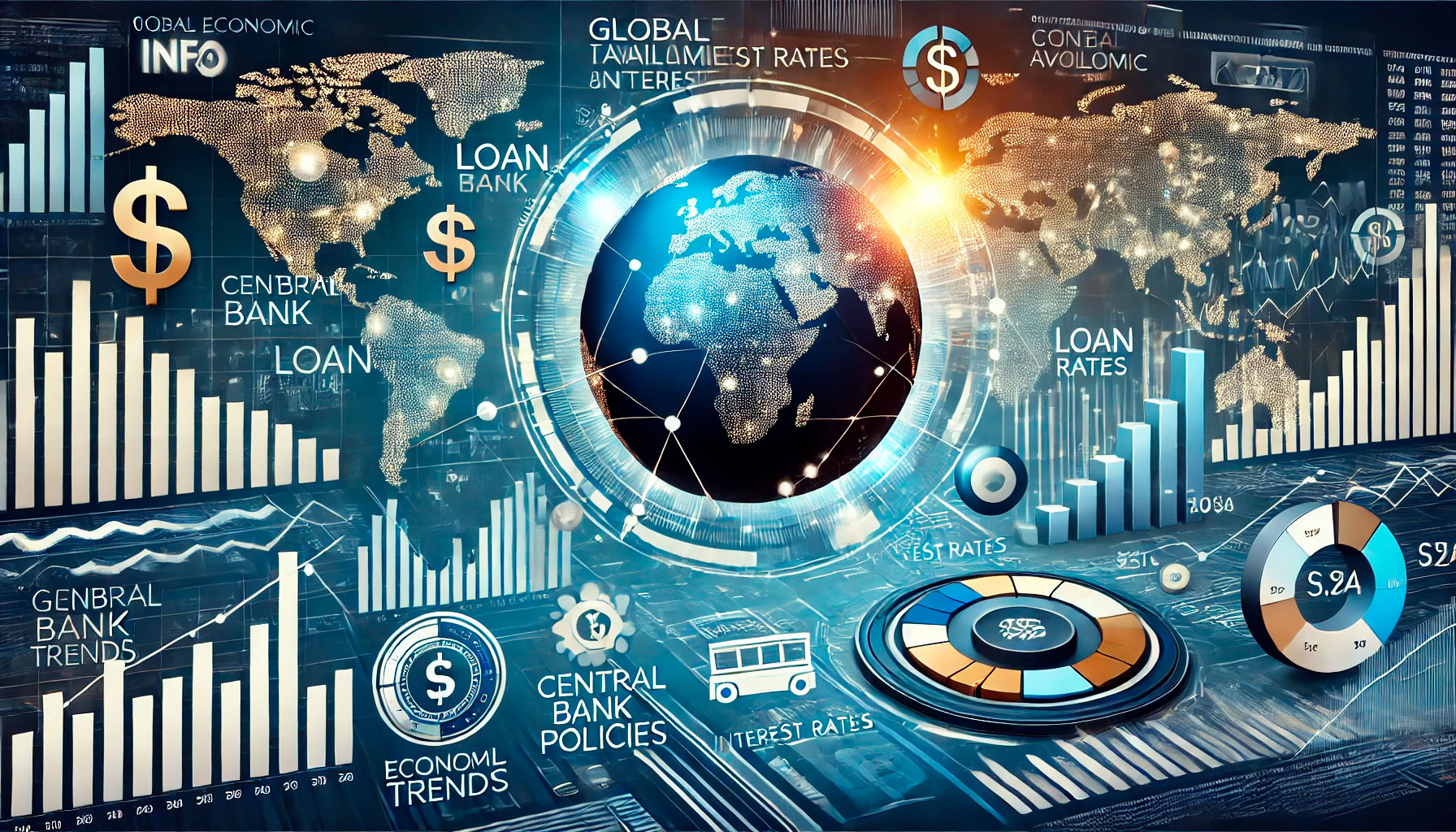
The global economy is a complex and interconnected system, with each region, nation, and even local community playing a role in shaping overall financial conditions. One of the most significant ways these global trends influence everyday life is through the availability of loans and the interest rates at which they are offered.
Interest rates and the availability of loans are not fixed; they fluctuate in response to a range of macroeconomic factors. As global markets experience change, whether through economic growth, recession, inflation, or geopolitical shifts, these changes often ripple through to lending institutions, affecting borrowers’ access to credit and the cost of borrowing. Understanding these dynamics can give borrowers an advantage, helping them make more informed decisions when it comes to managing debt and securing favorable financial terms.
The Role of Central Banks and Monetary Policy
Central banks, such as the Federal Reserve in the United States, the European Central Bank (ECB), and the Bank of England, play a pivotal role in shaping loan availability and interest rates. These institutions set the base interest rates that influence the broader financial markets. When a central bank adjusts its key interest rate, it directly affects the cost of borrowing for both individuals and businesses. This, in turn, impacts consumer spending, investment, and overall economic activity.
During times of economic growth, central banks may raise interest rates to prevent the economy from overheating, which can lead to inflation. On the other hand, during periods of economic downturn or recession, central banks may lower interest rates to stimulate borrowing, spending, and investment. These rate changes make it cheaper or more expensive to take out loans, with lower rates encouraging borrowing and higher rates discouraging it.
In recent years, we’ve witnessed central banks around the world adjusting rates in response to the economic fallout from the COVID-19 pandemic. In many countries, interest rates were lowered to historic lows in an attempt to stimulate the economy. This had a direct impact on loan availability, as borrowing costs dropped, making loans more accessible to both individuals and businesses. However, as economies recover, central banks are beginning to raise rates again, signaling a shift in the financial landscape.
Inflation and Its Impact on Loan Terms
Inflation is another critical global economic factor that affects loan availability and interest rates. Inflation refers to the general increase in prices of goods and services over time, eroding purchasing power. When inflation rises, central banks often respond by increasing interest rates to curb excessive price growth. Higher rates are intended to make borrowing more expensive, thereby slowing down consumer demand and business investment, which can, in turn, reduce inflationary pressures.
For borrowers, inflation can have a dual effect. On the one hand, rising interest rates make loans more expensive, which can reduce loan availability as consumers and businesses may be less inclined to borrow. On the other hand, inflation often means that lenders are more cautious about lending, as the real value of the money they lend may decrease over time. This caution can result in stricter lending criteria, making it harder for borrowers to secure loans or qualify for favorable terms.
Additionally, inflation can influence the value of assets used as collateral for loans, such as homes or cars. For example, if inflation causes housing prices to rise, homeowners may be able to borrow more against their property due to its increased value. However, the higher interest rates that often accompany inflation could offset this potential benefit, making loans less attractive for some borrowers.

Global Economic Growth and Recession Cycles
The overall health of the global economy, reflected in growth or recession cycles, plays a crucial role in loan availability and interest rates. During periods of strong economic growth, consumer confidence rises, leading to an increase in demand for loans. Banks are more willing to lend, as they perceive a lower risk of borrowers defaulting on their loans. This increased loan demand can drive down interest rates, making it more affordable to borrow.
However, during periods of recession, the opposite is true. Economic contraction leads to lower consumer and business confidence, and lenders become more risk-averse. They may raise interest rates to compensate for the higher risk of default, or they may tighten lending standards, making it more difficult for borrowers to qualify for loans. Furthermore, in a recession, central banks may lower interest rates to stimulate borrowing and economic activity, but the overall loan availability may still be reduced due to the increased risk perceived by financial institutions.
In the wake of the 2008 global financial crisis, for example, many banks became extremely cautious in their lending practices. The availability of loans was significantly reduced as lenders sought to mitigate the risks associated with the widespread defaults and economic downturn. In contrast, during periods of rapid economic recovery, such as after the COVID-19 recession, banks may lower interest rates to encourage borrowing and help drive economic growth.
Geopolitical Factors and Their Effect on Loan Markets
While central banks and economic cycles have a direct impact on interest rates, geopolitical events can also create volatility in the global financial markets. Political instability, trade wars, and international conflicts can create uncertainty, which often leads to fluctuations in interest rates and the availability of loans. Geopolitical risks can affect investor confidence, which in turn influences the cost of borrowing. When geopolitical tensions rise, investors may demand higher returns for lending, causing interest rates to increase.
For instance, events such as Brexit, the U.S.-China trade war, or the conflict in Ukraine can lead to disruptions in global supply chains, affecting inflation and economic stability. These uncertainties often result in heightened risk aversion among lenders, leading to more stringent loan conditions and higher interest rates. Similarly, shifts in trade policies and international relations can impact currency values and foreign investments, further influencing borrowing conditions in both domestic and international markets.
The Influence of Global Financial Markets and Credit Conditions
In a globally interconnected world, financial markets in one region can have a significant impact on loan availability and interest rates in another. For example, global investors and international financial institutions heavily influence interest rates. When foreign investors feel confident in the stability and growth prospects of a country’s economy, they may be more willing to invest in that country’s bonds or other financial assets. This increased demand can lower borrowing costs for the government, banks, and businesses, leading to lower interest rates for consumers.
On the other hand, if global investors pull their funds from a particular market due to economic instability or concerns over risk, borrowing costs may rise. Countries that rely on foreign investment may see their interest rates climb as a result of a capital outflow, making loans more expensive for domestic borrowers. Additionally, global credit conditions can affect the terms under which banks lend to one another, which ultimately trickles down to the rates consumers face when applying for loans.
Conclusion
Central banks, inflation, economic cycles, geopolitical events, and global financial markets all play crucial roles in determining how loans are priced and how readily available they are. As global economic conditions continue to evolve, so too will the lending landscape, and understanding these factors is essential for anyone looking to borrow money in the future.
Whether you’re planning to purchase a home, finance a car, or take out a business loan, being aware of the broader economic forces at play can help you make informed decisions. By staying informed about global economic trends, you can better anticipate shifts in interest rates and loan availability, ultimately securing the best possible terms for your financial needs.





